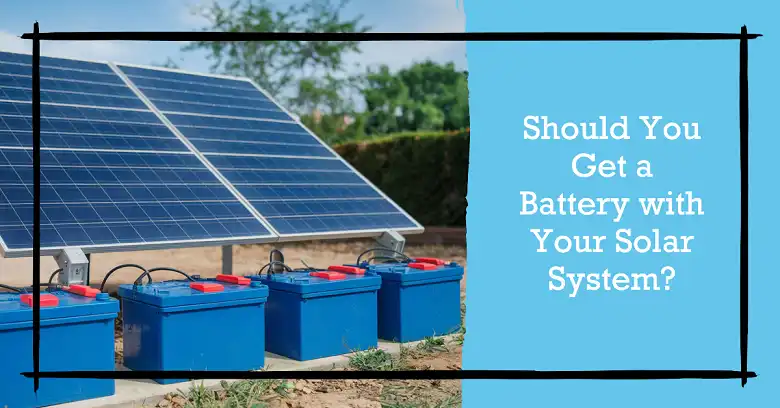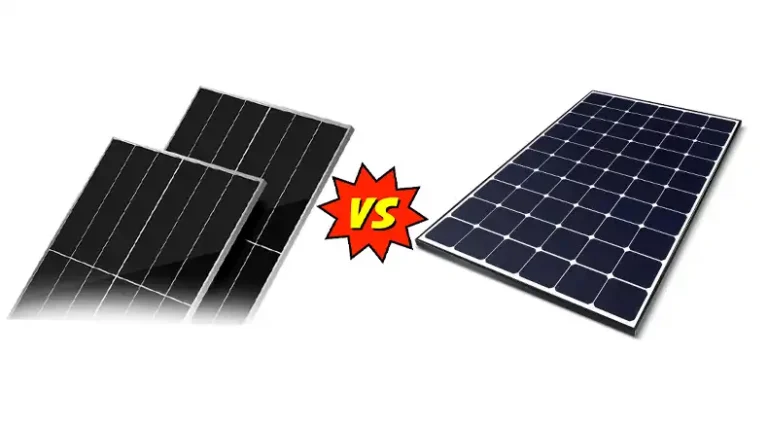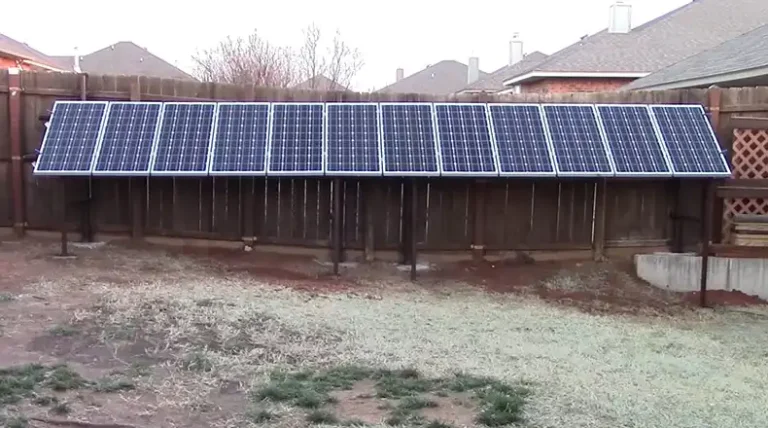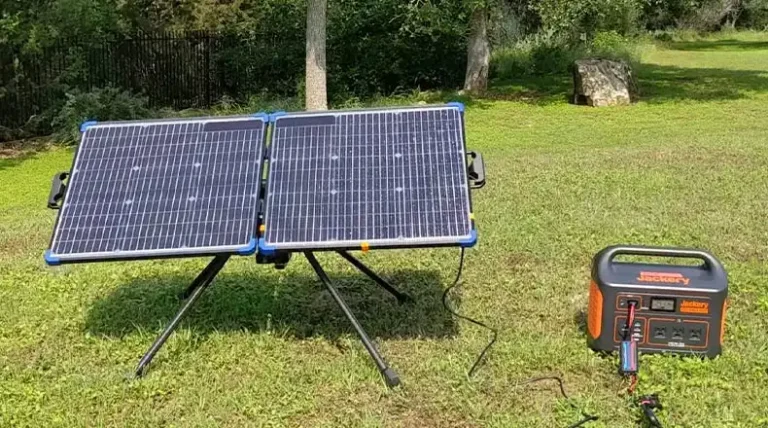Should I Get a Battery with My Solar System?
When considering a solar system, one of the most frequent questions that arises is, “Should I get a battery with my solar system?” The short answer is: It depends on your specific needs, energy usage patterns, budget, and whether you prioritize energy independence or just want to lower your electricity bill. In this article, we’ll discuss the benefits, costs, and considerations of adding a battery to your solar system, offering you a comprehensive guide to making an informed decision.

Benefits of Adding a Battery to Your Solar System
1. Energy Independence
Batteries allow for true energy independence by enabling off-grid capabilities. If you live in a remote location or simply want to cut ties with your utility provider, a battery is a must. With a properly sized battery system, your solar setup can provide power even during prolonged cloudy periods.
For instance, a standard Tesla Powerwall 2, which has a usable capacity of 13.5 kWh, can power an average U.S. household (using around 30 kWh per day) for almost half a day on a full charge, covering essential loads like lights, refrigerators, and communication devices. If combined with efficient appliances and energy-saving measures, such a system can go off-grid for days.
2. Backup Power During Outages
One of the most appealing aspects of a battery system is its ability to keep the lights on when the grid goes down. Power outages due to severe weather or grid failures are becoming more frequent. In 2021, U.S. electricity customers experienced an average of 8 hours of outages, the highest annual average since tracking began.
During such outages, a battery storage system provides peace of mind by powering critical devices like medical equipment, heating systems, and security systems. A single 10 kWh battery can keep essential devices running for up to 24 hours, depending on the load.
3. Economic Advantages
Time-of-Use Rate Savings: Many utility companies charge different rates for electricity depending on the time of day. These “time-of-use” (TOU) rates are higher during peak periods (typically early evening) when demand is highest. By storing excess solar power in a battery, you can use it during these expensive periods, thereby reducing your electricity bill.
For example, in California, peak rates can be as high as $0.45 per kWh, compared to $0.12 per kWh during off-peak times. Using a battery, homeowners can shift consumption to cheaper periods and save significantly over time.
Potential for Energy Selling: In regions with favorable net metering policies, you might be able to sell excess energy stored in your battery back to the grid. This can offset the cost of the system and shorten the payback period.
4. Environmental Benefits
Adding a battery to your solar system helps reduce reliance on fossil fuels by enabling greater self-consumption of clean energy. The U.S. Environmental Protection Agency (EPA) estimates that the average American home emits 8.1 metric tons of CO2 annually from electricity use. A solar-plus-battery system can significantly lower this number by reducing the need for electricity generated by coal or natural gas.
Things You’ll Need to Consider Before Adding a Battery
1. Initial Cost
The cost of adding a battery can vary significantly depending on the type and size of the battery. As of 2024, the average cost of lithium-ion batteries ranges from $9,000 to $15,000, including installation. A popular option like the Tesla Powerwall costs approximately $11,500, while higher-end systems can exceed $20,000.
| Battery Type | Price Range (Including Installation) | Typical Lifespan | Maintenance Requirements |
| Lead-Acid | $5,000 – $8,000 | 5 – 7 years | High |
| Lithium-Ion | $9,000 – $15,000 | 10 – 15 years | Low |
| Flow Batteries | $15,000 – $30,000 | 20+ years | Low |
In addition to the battery cost, installation may require upgrading your inverter, adding wiring, and labor expenses, which can add another $1,500 – $3,000 to the total cost.
2. Battery Life and Performance
The lifespan of a battery is measured in cycles (one cycle is a complete charge and discharge). Lithium-ion batteries typically offer 4,000 to 6,000 cycles, while lead-acid batteries provide 500 to 1,000 cycles. This translates to about 10 – 15 years of use for lithium-ion, compared to just 3 – 7 years for lead-acid.
Battery efficiency is another factor. Lithium-ion batteries have a round-trip efficiency of around 90%, meaning 90% of the energy stored is available for use, compared to 70 – 80% for lead-acid.
3. Maintenance and Replacement
Lithium-ion batteries require minimal maintenance, but lead-acid batteries need regular checks to prevent sulfation and ensure optimal performance. When a battery reaches the end of its lifespan, replacement costs can be as high as the initial investment.
4. Local Regulations and Incentives
Some states and countries offer financial incentives for battery storage. For example, in the U.S., the Federal Investment Tax Credit (ITC) provides a 26% tax credit on the cost of solar and battery systems. Some states like California also offer rebates through the Self-Generation Incentive Program (SGIP), which can reduce battery costs by up to $2,000.
Sizing Your Battery System
To determine the right size, consider your daily energy consumption, backup power needs, and desired autonomy (days of backup power). For an average U.S. home using 30 kWh per day, a 15 kWh battery would provide half a day of backup. If you want two full days of autonomy, you would need at least a 60 kWh battery system.
Calculation Formula:
Battery Size (kWh) = (Daily Energy Use × Backup Days) ÷ Depth of Discharge
Daily Energy Consumption and Backup Needs
When choosing the size of your battery, it’s crucial to analyze your daily energy usage patterns and identify the critical appliances you want to keep running in case of a power outage. For example, if your daily electricity consumption averages 30 kWh, and you only need backup power for essential appliances like lights, refrigerator, and communication devices, a 10 kWh battery might suffice for up to 8 – 10 hours. If you want to cover all appliances, including HVAC and water heating, you’ll need a significantly larger battery.
Depth of Discharge (DoD) Consideration
Depth of discharge (DoD) measures how much of a battery’s total capacity can be used without shortening its lifespan. Most lithium-ion batteries have a recommended DoD of 80% – 90%, meaning you can safely use 80% – 90% of the battery’s capacity before recharging. Lead-acid batteries, in contrast, have a recommended DoD of only 50% to avoid long-term damage.
For example, a 10 kWh lithium-ion battery with a 90% DoD will provide 9 kWh of usable energy. This higher DoD allows you to maximize storage without sacrificing battery life, making it a preferable option for most residential systems.
Practical Sizing Example
Suppose you want your battery to provide backup power for 2 days in the event of a grid outage. Here’s how to calculate the battery size you need:
Battery Size (kWh) = (Daily Energy Use × Backup Days) ÷ Depth of Discharge
If your home uses 30 kWh per day, and you want 2 days of backup with a lithium-ion battery (90% DoD):
Battery Size = (30 kWh × 2 days) ÷ 0.90 = 66.7 kWh
So, you would need a 67 kWh battery system. For context, this would require around 5 Tesla Powerwall 2 batteries (each providing 13.5 kWh of usable capacity).
Oversizing vs. Undersizing Considerations
Oversizing your battery system ensures you have ample power for extended outages or cloudy days, but it comes with a higher upfront cost. Undersizing, on the other hand, might save you money initially but could leave you without enough power during critical times. The best approach is to balance cost with expected needs and future scalability.
Wrapping Up
Before deciding, thoroughly evaluate your energy needs, budget, and goals. If you live in an area prone to outages, a battery is a practical addition to your solar system. Even in areas with a stable grid, batteries can offer economic benefits, especially with time-of-use rates or net metering programs. For those aiming for complete energy independence, investing in a larger battery system is the way to go.






